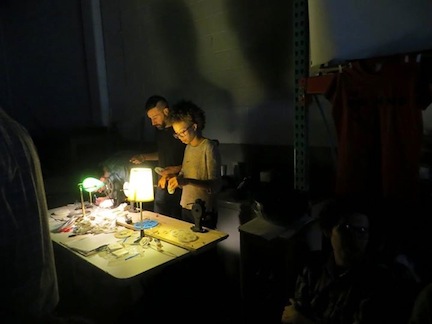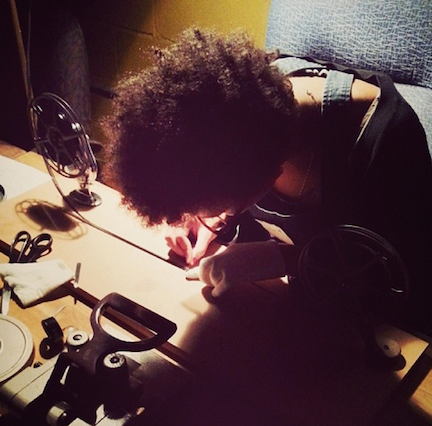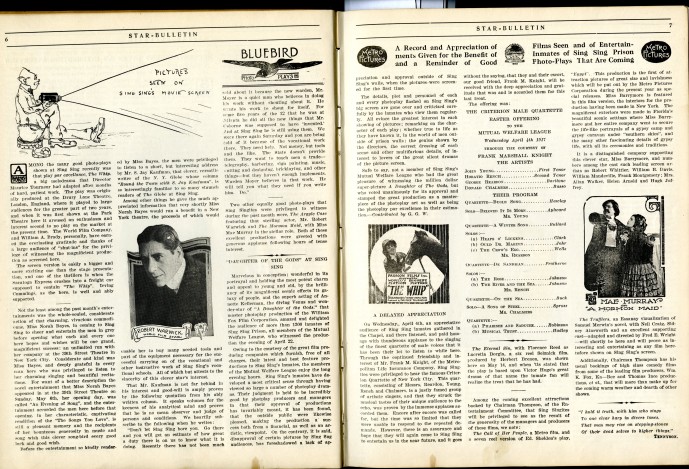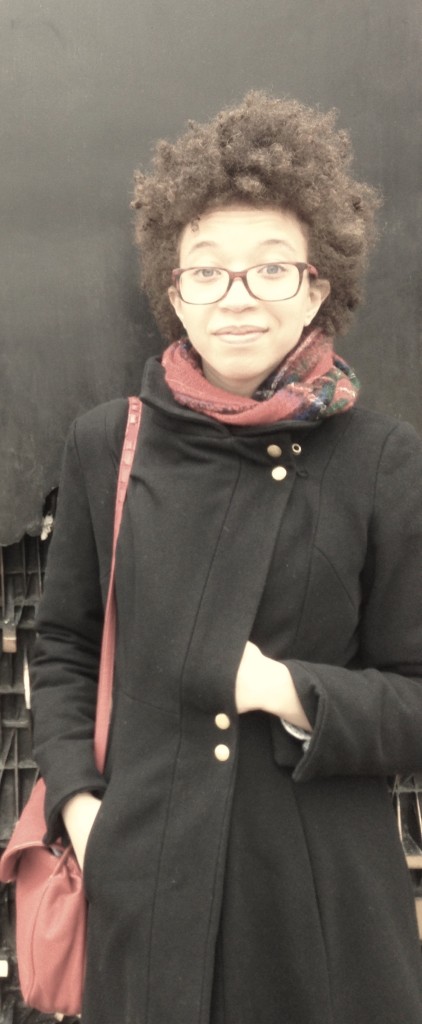Click here to print
Why Deny Film to People in Prisons?
posted May 1, 2015
A fledgling archivist tackles a contentious issue: People who are incarcerated have access to books, so why shouldn’t they also have meaningful access to moving-image media?
n

A Sing Sing prison newsletter during the silent era.
Providing people in American prisons with access to film and other moving-image media is a relatively rare practice because prison authorities and society at large aren’t convinced it’s deserved or appropriate. The practice divided opinion even during the silent era:
“For conservative social commentators, it was a potent example of the untoward coddling of prisoners, whereas for penal reformers film had the potential to uplift, reward, and inculcate American values.”
So communications scholar Alison Griffiths has written about pre-talkies film as “an institution, practice, experience, ritual, and disciplinary tool.”
In today’s era of mass incarceration in virtual warehouses of humanity, film’s capacity for nurturing the humanity of inmates would seem all the more needed.
That’s the rationale for a project by Carmel Curtis, a student in the graduate Moving Image Archiving and Preservation program at New York University. She is trying to find out what access to film and related media people have when they are incarcerated in American prisons; whether that has changed, over time; and what stands in the way of increasing availability.
The upshot of her inquiries, to date, is that while men and women who are incarcerated can expect to be able to read books, albeit in a limited range, film and other audio-visual material, and even audio-books, are generally out of bounds.

Carmel Curtis at work with a colleague.
Curtis contends that “if we view prisons as correctional facilities or as places for reform, it’s important that we provide the tools for that process to happen.” She argues that while reading material is essential to “a community that is behind bars,” that “should not be the only source of education, entertainment, and information.”
Curtis has been working on her project to fulfil the thesis requirement of her two-year degree from New York University’s Moving Image Archiving and Preservation Master’s Program, from which she is about to graduate. Her research has included distributing questionnaires to prison librarians, people who have worked with prison aid organizations relating to “the informational, educational, recreational, and cultural needs of those incarcerated,” and people currently and formerly in prison.
Curtis grew up in New York City, studied English literature and film history at Tufts University, close to Boston, and then worked for a few years in a film lab in Seattle before enrolling in NYU’s program, which is one of only three North American graduate-level training venues for moving-image archivists. She says she settled on the topic of prison access because “listening to the news every day, I kept hearing stories around issues of mass incarceration. It’s impossible to avoid.”
Indeed, rates of incarceration in the United States have become a matter of legend, so high are the figures. In October 2013, the country’s 2.3-million detainees in local jails, state prisons, and federal penitentiaries represented a rate of 716 per 100,000 of the national population, the highest per capita rate in the world. The country has 4.4 percent of the world’s population, but 22 percent of its prison population.
The US Department of Justice reported in 2006 that 7.2 million people — one of every 32 American residents — were in prison, on probation, or on parole. Drug convictions account for more than 20 percent of imprisonments, and overall incarceration rates are wildly disproportionate: unsurprisingly, men account for the vast majority of prisoners; not much less surprisingly, racial disparities are such that one in three African American men spend some time in jails or prisons, during their lives.
reform and rehabilitation
n
Reform and rehabilitation of this vast population, let alone efforts to reestablish ex-prisoners back into their communities, have generally not been public-policy goals for decades. Containment — warehousing – and control are instead priorities. Access to educational materials reflects that begrudging mentality. So, for instance, while Federal Bureau of Prisons regulations prohibit printed materials only if they are deemed “detrimental to the security, good order, or discipline of the institution or if they might facilitate criminal activity,” actual practice often goes further, as a 2011 article in The Huffington Post explained: “According to a list compiled by the the Prison Books Program, and seen by The Huffington Post, many correctional institutions censor materials far beyond these guidelines.”
 The article notes that in the 1980s, the US Supreme Court ruled that prison walls “do not form a barrier separating prison inmates from the protections of the Constitution,” and that “a warden may not reject a publication ‘solely because its content is religious, political, social, or sexual, or because its content is unpopular or repugnant’.” But state prisoner-rights organizations find that correctional systems often make up their own rules, as they go, with little consistency or sense.
The article notes that in the 1980s, the US Supreme Court ruled that prison walls “do not form a barrier separating prison inmates from the protections of the Constitution,” and that “a warden may not reject a publication ‘solely because its content is religious, political, social, or sexual, or because its content is unpopular or repugnant’.” But state prisoner-rights organizations find that correctional systems often make up their own rules, as they go, with little consistency or sense.
In that context, it isn’t surprising that, as Curtis says she is finding, access to audio-visual material lags far behind access to printed material, let alone what would be ideal. “It’s very varied,” she says. “There are lots of different prison policies depending on wardens and administrations.”
She is still collecting results of the surveys she has distributed by whatever means available, but can say: “The things you’d assume would be barriers, are barriers: funding, storage space… Lack of playback equipment is a big concern.
“But these are concerns that are definitely correctable.”
Again a comparison with the availability of books within prisons is telling. Prison libraries may have substantial collections and be able to acquire and incorporate materials regularly, Curtis says, suggesting that some of the mechanics required for efficient incorporation of audio-visual material are in place. But she adds that while “there are a number of amazing organizations like Books Through Bars and Books Not Bars, not many or any I can find help get audio-visual media into prisons.”
She is finding that while prison librarians do not lack for materials recommending how best to run their facilities, “most don’t mention audio-visual materials, and if they do, it’s only in passing.”
She suggests: “There are so many things wrong with mass incarceration, so it’s not as if movies are the first of them to tackle; but I do think it’s an area that could use some more thought and consideration.”
a rare resource
n
Few current or former prisoners have responded to Curtis’s questionnaires, but those who have indicate that film is a rare resource throughout the multi-level American prison system.
Administrators are surprising favorable about the prospect of increasing film access within prisons, Curtis is finding. She had assumed they “would be against this form of expression” but from the research I have, it does seem that the opposite is true: Adminisrators are open to showing movies, perhaps not all movies, but they’re open to that conversation.”
She has received few survey responses from administrators of private prisons, which are becoming increasingly common in American states, but the responses from government-run institutions suggest that “we could have more conversations about the nature of the prison; that needs to happen alongside why we need AV in them.”
In fact, Curtis says, one sign of potential for such discussions is that a common response from prison officials to her surveys of their incorporation of film and related media into their institutional management is “’I never thought about that.’”
It would presumably be up to nonprofit prison-aid organizations to expand, implement, and support film programming in prisons, although models of commercial film distribution to prisons do exist. One of the few companies that currently send film into correctional facilities is Swank. It prepares often lightly edited versions and offers those to prisons as it does to hospitals and other non-traditional theatrical spaces.
Swank, whose catalog includes new and classic films, has existed since the 1937, and has distributed to prisons since at least the 1970s. Its publicity speaks of films’ ability to “encourage positive behavior” and provide “an enjoyable leisure-time activity” and “relaxed, non-competitive recreation.” And, Swank notes, “showing movies can help free staff to compete daily tasks and complete administrative requests in an efficient and timely manner.” Oh, Swank adds, “films can enlighten, entertain, and educate your inmates of important issues.”
Materials in John Jay’s special-collections library speak to a fascinating history of film in prisons, Curtis says. She has found, for example, a Sing Sing penitentiary monthly publication, The Star Bulletin, which in 1917 spoke of showing movies as a way to relieve the clearly appalling, crowded conditions of the cellblocks. “Showing movies was a way to get people out of those small areas,” says Curtis. The Star Bulletin even ran a regular column devoted to movies showed at the prison. “Often movies were sent directly from the Metro and Universal distribution companies, and often sent filmmakers and actors to accompany them.”’

Sing Sing prison’s “Star Bulletin.” John Jay College of Criminal Justice library special collections
Alison Griffiths, who was cited at the beginning of this article, has a book-in-progress under contract with Columbia University Press titled Screens Behind Bars: Cinema, Prisons, and the Making of Modern America in which she is exploring how silent cinema served as a portal to the outside world in the prison in the early twentieth century.
The professor of communication studies at Baruch College of the City University of New York wrote in a chapter she contributed to a 2012 book, A Companion to Early Cinema, edited by André Gaudreault, and others, that even while films screened in Manhattan, 30 miles up the Hudson River, in Ossining, New York, “a separate system of film exhibition culture was taking shape within the infamous Sing Sing prison. The fact that in 1914 one could sit in the Sing Sing chapel and watch the same theatrical film comedy or popular melodrama currently playing before Manhattan audiences, perhaps seated next to a ‘lifer’ who may have never seen motion pictures before, underscores how the experience and historical meaning of film viewing are profoundly shaped by the exhibition context.”
She continued: “Both American cinema and the movement known as the ‘new penology’ came of age between 1900 and 1920, inviting an inquiry into the fascinating ways in which they informed one another.”
 The American Library Association released its first standards for correctional facilities in the early 1930s. An influential prison reformer, Austin McCormick, had surveyed prisons around the country and had found that in the late 1920s few prisons had vocational education programs of any kind, and that virtually none had an effective one. He strongly recommended that “visual aides” have a role in prisons: moving pictures would be a form of education.
The American Library Association released its first standards for correctional facilities in the early 1930s. An influential prison reformer, Austin McCormick, had surveyed prisons around the country and had found that in the late 1920s few prisons had vocational education programs of any kind, and that virtually none had an effective one. He strongly recommended that “visual aides” have a role in prisons: moving pictures would be a form of education.
Curtis’s sense is that since the 1970s, philosophies of education and reform in prisons have come to emphasize outdoor activities or traditional educational approaches such as college classes that might have used film, but less and less so.
She plans to find out more. She says she’ll continue her project after she graduates from the NYU program, and hopes that it can find a fit within organizations already devoted to advancing educational opportunities for people who are incarcerated. “It’s important to expand and continue conversations about the functionality of the space of the prison,” she argues. “Getting audio-visual materials to an underprivileged population fits in with the work of many organizations, so there’s a lot of potential for efforts to be initiated or increased.”
— Peter Monaghan
Printed from Moving Image Archive News: https://www.movingimagearchivenews.org
URL to article: https://www.movingimagearchivenews.org/why-deny-film-to-people-in-prisons/
Click here to print